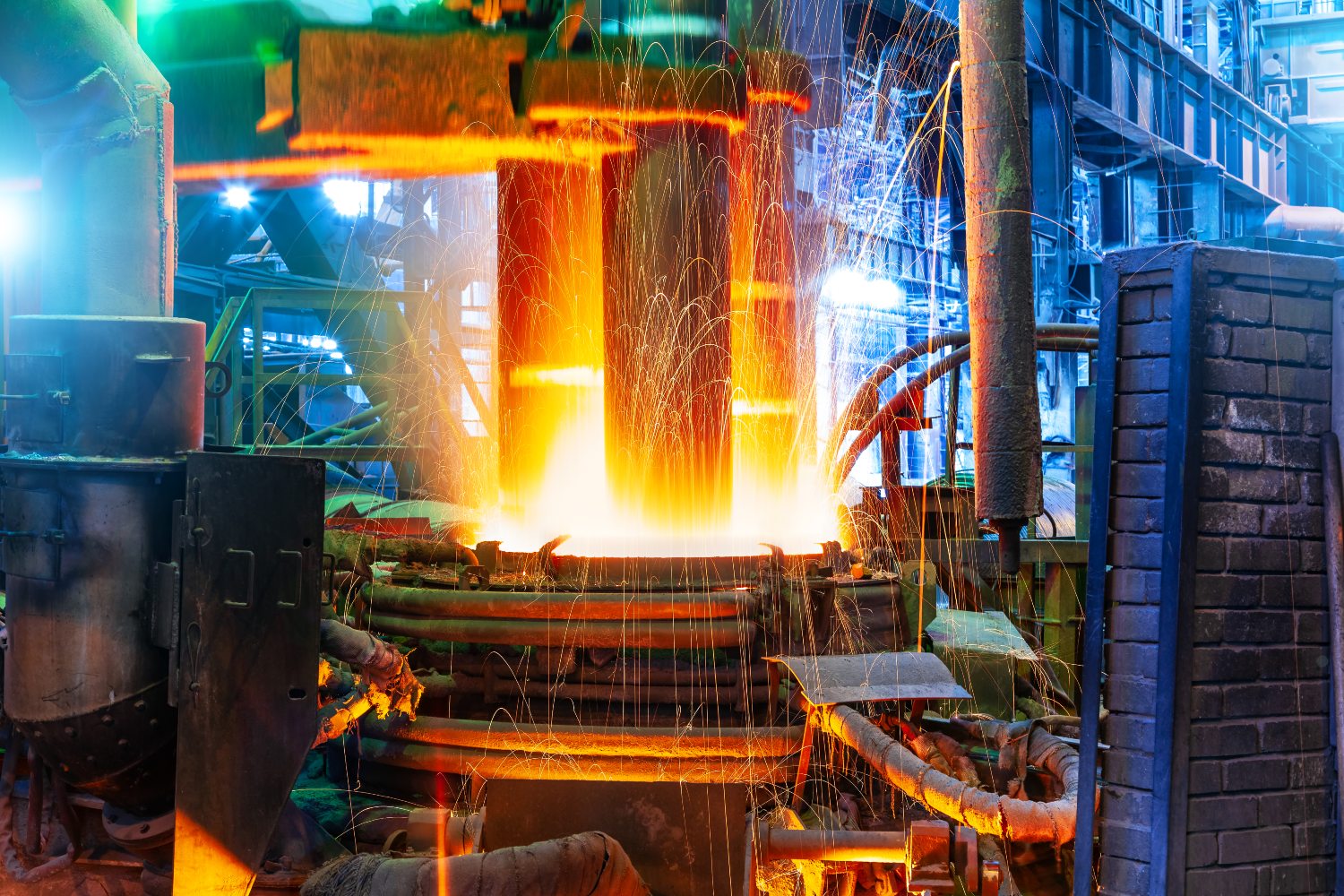The aim of this in-depth research was never to simply evaluate the continued importance of these industries to the UK’s manufacturing supply chains. As in reality, they mean much more to our society than that.
These industries:
- bring economic prosperity to many of the UK’s regions
- employ a combined 250,000 people
- boast a collective turnover of £67.5 billion
- deliver materials that underpin other UK industries.
Simply said, they are rooted deep in the heart of a prosperous future for the UK.
Continually evolving over the decades
Our foundation industries exist because a series of crucial innovations allowed them to manufacture materials at a scale and price that economies across the globe could afford.
They have continually evolved over the decades to meet our widening needs. It means that an average of 75% of the man-made materials anybody sees when they look around them will have been manufactured by one of six key industries:

Credit: hxdyl, Getty Images
- cement
- glass
- paper
- ceramics
- metals
- bulk chemicals.
But as we move ever further into the 21st century, the challenges induced by climate change and the need for long-term sustainability throughout our society, need to be rapidly addressed. Innovation will be a key to doing this but, as the pace of change continues to increase, we must regularly review what may be blocking more rapid innovation.
To do this requires as much evidence, both quantitative and qualitative, as we can gather. We commissioned this research to investigate the factors that may prevent innovation from happening unless appropriate actions are taken quickly.
An innovation push is needed
The headline result of the research showed that in the previous three years, just over half (56%) of the UK’s foundation industry businesses had introduced a new product or service. A similar proportion (53%) had sought to innovate their processes.
It was also noted that much of the innovation that had occurred was new to a firm, rather than new to market. The reticence to be the first to commit to novel and unproven technologies was clear.
The drivers for innovation were predominantly linked to growth ambition. Increasing sales and market share, maintaining competitive advantage and boosting production were common reasons for undertaking innovation activity, showing some welcome optimism in the sector’s future.
The challenge now will be to extend this optimism across the sectors to those who had not embarked on any recent commitments to innovate.

Credit: scanrail, Getty Images
Is this unique to the foundation industries?
The stand-out figure, that almost half of businesses within these industries had not undertaken any innovation for either products or processes in the past three years, will gain some attention. However, for a sector with high barriers to entry and substantial production costs, this does not come as a surprise.
In fact, the foundation industries appear to be more committed than others when it comes to investing in innovation.
According to a recent Longitudinal Small Business Survey, over the same three-year period only 41% of manufacturers introduced a new or improved product.
For wider businesses, only 25% of medium-sized and 19% of small businesses introduced new or improved goods or services. And 35% of medium-sized and 36% of small businesses introduced process innovations during the previous three years.
Much can and should be done to drive forward specific innovation and efficiency across the foundation sector. But we can’t lose sight of the wider issues affecting the whole of UK business and we should be prepared to learn from other sectors.
First steps that can make a difference
As with most seismic changes in industry and society, the key is cross-sector collaboration. This is where real differences could be made to the speed at which innovative new ideas are developed, tested, and implemented. Taking views from across these industries and their supply chains, from external experts, and wider research and development projects.
The research does show a willingness to open wider discussions but engagement outside of immediate supply chains remains low, as does seeking external business advice. There are real benefits to accessing independent thinking and this should be an immediate focus.

Credit: cagkansayin, Getty Images
The role of industry trade associations and industry bodies is crucial here. By using their direct access to businesses of all sizes, they are well-placed to encourage innovation through networking and cooperative ventures with:
- government
- research
- academia
- other industries.
As well as promoting and celebrating best practice and innovative work within each industry. They may also have a significant role to play in the training, education, and support programmes, which the study identifies as being needed.
Using the right language
Ultimately, to kickstart a commitment to innovation we need to make sure we are using the right language to business.
Regulatory and societal pressures to reduce carbon emissions may drive some foundation businesses to change, but for many, these are seen as bringing with them additional unaffordable costs to adapt. We need to support businesses to overcome this first hurdle of the initial financial outlay and see the bigger picture.
To do this, we must speak to these industries and their stakeholders about wider value. Yes, in terms of cost reduction, process efficiency and competitiveness, but also in terms of sustainability and societal value. Building an understanding that business value and environmental benefits are not mutually exclusive can shape conversations and commitments within the foundation industries.

Credit: bksrus, Getty Images
What steps is the TFI challenge taking?
The challenge is one response to this need. It is a programme of interventions designed to stimulate scale-up of the innovation pipeline needed to create a commercially sustainable future for these industries.
Our goal is to significantly increase the levels of engagement between:
- industry
- research
- technology providers
- end-users.
We want to drive innovation across the industries that deliver collaborative projects and deploy innovations from outside the sector by creating:
- competitions
- industrial-focused funding support
- a commitment to research and education.
We can justifiably be proud of the role the TFI challenge is playing if we can succeed in:
- bringing new entrants and technologies to the market that have the potential to play a significant role in the future of these industries
- supporting industry associations to promote best practice and collaboration
- driving towards net zero targets in a way that brings efficiency and financial sustainability to these industries.
The TFI challenge will develop innovative technology to improve resource or energy efficiency within the foundation industries. UK registered businesses can apply for a share of up to £66 million, match-funded by £83 million from the private sector.
Read the TFI summary report (PDF, 972KB).
Read the TFI sector summary fact files (PDF, 1.1MB).
The TFI challenge is delivered by Innovate UK.
Contact
Connect with Bruce on LinkedIn
Connect with Innovate UK on LinkedIn
Follow Innovate UK on Facebook
Top image: Credit: Juan-Enrique, Getty Images



